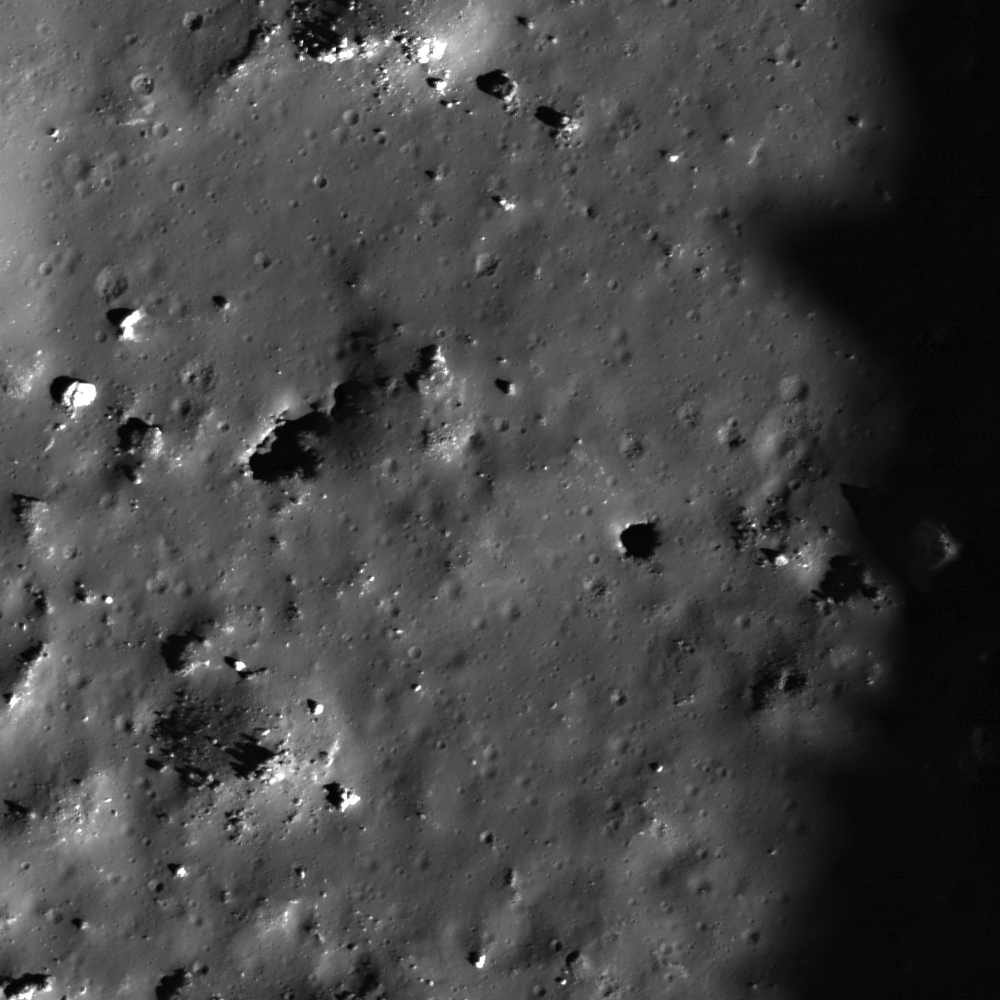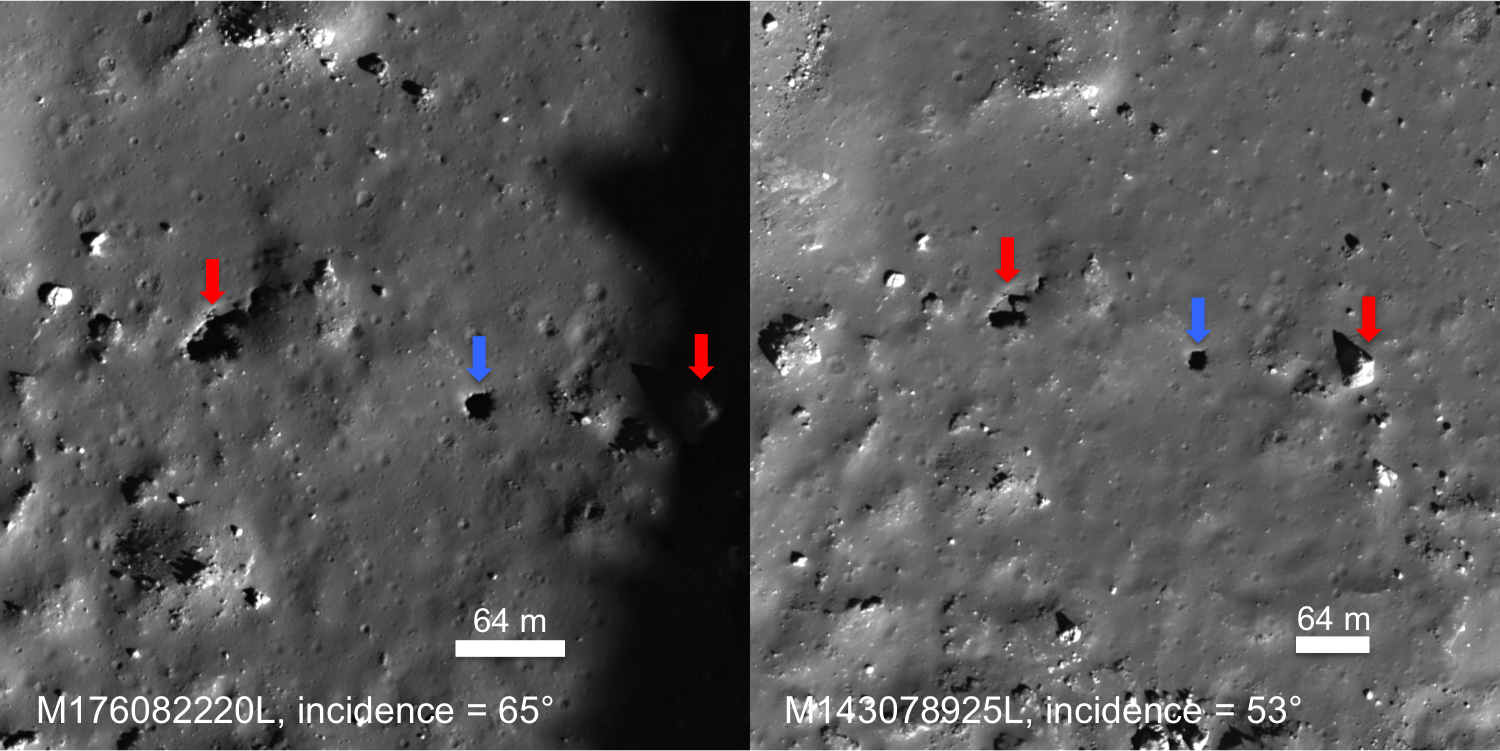
Impact melt pits are a type of lunar feature now seen in many LROC NAC images. Today's Featured Image shows a newly discovered pit within the impact melt of a relatively small, unnamed crater with a diameter of ~10.8 km (located at 43.899 °N, 235.679 °E). The impact melt deposit in the crater floor is only ~2.5 km across. The pit is roughly circular with a diameter of ~16 meters. This diameter is smaller than the large pits found in mare basalt: the Mare Ingenii pit is ~130 m in diameter, the Marius Hills pit is ~65 m in diameter, and the Mare Tranquillitatis pit is ~100 m in diameter.
The formation mechanism for pits in mare basalt and in impact melt is likely similar. Pits in mare basalt are may have formed when a portion of a lava tube collapsed. The subsequent pit is a skylight that leads into the intact lava tube. In the case of impact melt pits it is thought that if the impact melt deposit is thick enough the surface of the melt will cool but the interior will stay molten for a period of time. As the floor of the crater below the impact melt changes after the initial impact, the still-molten melt would be forced to flow under the new crust, possibly draining through a new crack or opening under the impact melt surface. This movement would leave a void underneath the surface of the impact melt. At some point later, a portion of the surface collapsed, leaving the pit we see here.
Higher sun angle (lower incidence angle) images allow scientists to calculate the depth of this impact melt pit. In the image above, two observations give a slightly different view of the main pit (blue arrow) and the irregular fracture (which could be a second pit) to the west (red arrow on the left), but the floor of the pit is not visible at either incidence angle.
Explore the entire NAC frame to see more of this exciting melt deposit!
Related Posts:
How Common are Mare Pit Craters?
Published by Sarah Braden on 2 March 2012

